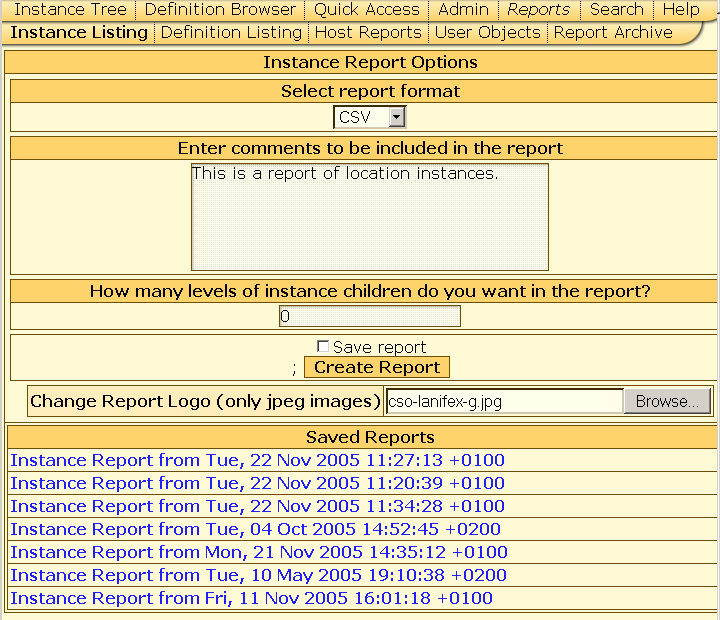Choosing Report Type
After selecting which instances will be used for a report, the following form will be displayed. This form offers four different types of reports:
PDF -- a multi-page Portable Document Format file, which will be saved via the browser
XML -- output formatted according to Extensible Markup Language rules
CSV -- comma separated values, suitable for import into a database or spreadsheet
HTML -- output designed to be viewed in a Web browser

The above screenshot shows selection of report options. First, the type of output should be selected. Next, a box is available into which you can enter some text which will be prepended to the report. Underneath is a field where you can enter the number of levels of instance children which will be included in the report. This is designed to enable reports on instances and their child instances (the default is 0, which means no child instances will be included.)
Next, there is a checkbox, which if selected will save a copy of the report onto disk, for later access. Below this is a file selector which allows you to choose the logo or image to be used in the PDF version of the report. Finally, there is a list of the reports which have been previously saved, and which may be viewed by clicking on them.